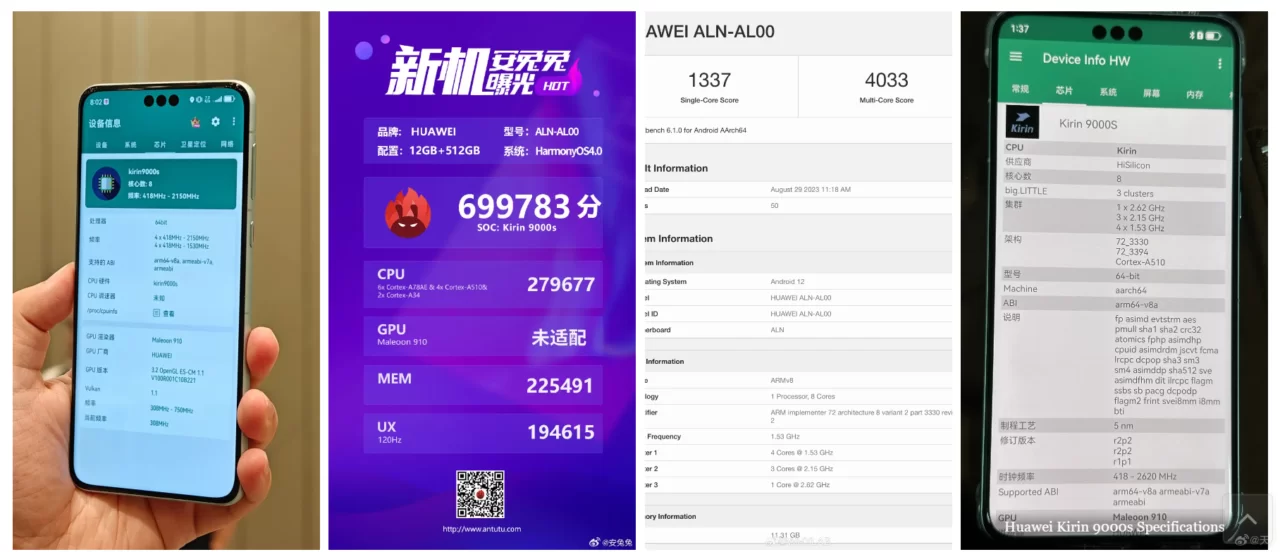In a surprising move, Huawei has officially revealed the Mate 60 Pro, accompanied by the introduction of the Kirin 9000s SoC (System on a Chip). This development naturally raises questions about how Huawei managed to develop this SoC despite ongoing sanctions imposed by the United States.
Collaboration with SMIC
Reports from the South China Morning Post suggest that Huawei has entered into a partnership with SMIC (Semiconductor International Manufacturing Corp) to collaborate on the new Kirin 9000s SoC.
Previously, Huawei had consistently partnered with TSMC for the production of Kirin SoCs. However, due to the sanctions imposed on Huawei by the US, TSMC is no longer able to provide such support.
Rumored Specifications
Rumors suggest that SMIC has manufactured the Kirin 9000s 5G SoC using a 7nm second-generation lithography process, referred to as Node N+2, as reported by TechInsights, a research firm. However, neither Huawei nor SMIC has released an official statement regarding the production of the Kirin 9000s 5G.
Kirin 9000s 5G Specifications

The specifications of the Kirin 9000s SoC remain somewhat mysterious. Various benchmarking applications have reported different configurations for this SoC, including:
- AnTuTu Benchmark, which identifies the Kirin 9000s as having a 12-core design, comprising 2 A34 cores, 6 custom A78AE cores, and 4 A510 cores. This chip boasts a maximum frequency of 2.62GHz and features a new Maleoon-910 GPU running at 750MHz.
- Geekbench and HW Info suggest that the Kirin 9000s employs a three-cluster architecture with eight cores. It comprises 1 core clocked at 2.62GHz, 3 cores at 2.15GHz, and 4 cores at 1.53GHz. It also utilizes the Maleoon-910 GPU and operates on HarmonyOS 4.0 based on Android 12.
- Some third-party applications have identified a two-cluster architecture with 4 cores at 2.15GHz and 4 smaller cores at 1.53GHz. This configuration also uses the Maleoon-910 GPU with a clock speed of 750MHz.
There is no definitive confirmation regarding the accurate configuration, as Huawei has yet to officially disclose it.
Benchmark Scores
Huawei has introduced the Mate 60 Pro as its flagship smartphone, prompting curiosity about its performance compared to other flagship smartphones equipped with the latest SoCs.
In AnTuTu benchmark scores, the Mate 60 Pro approaches the 700,000 mark. In Geekbench testing, the Single Core score reaches 1337, and the Multi Core score achieves 4033.
This suggests that, in terms of performance, the Mate 60 Pro with the Kirin 9000s 5G SoC remains competitive, approaching the level of the Snapdragon 888, a flagship SoC from Qualcomm introduced nearly three years ago. While it may still fall behind flagship SoCs like the Snapdragon 8 Gen 2 and Dimensity 9200, it represents a significant improvement over the original Kirin 9000, which delivered performance similar to the Snapdragon 865.
Despite not yet reaching the top-tier performance levels, Huawei’s commitment to launching new smartphone products and developing its own SoC amid formidable sanctions is deserving of recognition.

